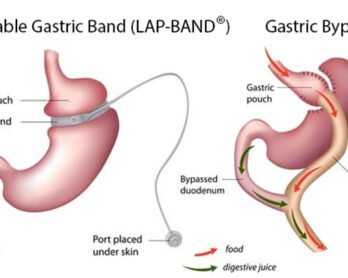Living Well with Serious Lung Disease: How Palliative Care Can Help

When you have a serious lung disease like chronic obstructive pulmonary disease (COPD) or pulmonary fibrosis, it can be difficult to know where to turn for help. Your treatment options may seem limited and confusing, especially when your experience with doctors has left you feeling like there are no good choices for quality of life. Maybe the medications don’t work very well or cause side effects that make you feel worse than when you started taking them. Maybe your doctor doesn’t know how to help you manage your symptoms — and neither does anyone else. This is when Palliative and Supportive Care can help.
Palliative care is different from hospice care.
Palliative care is different from hospice care, which is for people with a life-limiting illness. Palliative care can be provided to patients with any serious illness, regardless of how long they may live. And some people might be getting palliative care and not even realize it!
Palliative care focuses on improving quality of life for individuals and families facing a serious illness by providing pain relief, symptom management, psychological and spiritual support and other services to help them deal with their situation. These services are provided in addition to routine medical treatment rather than instead of it.
Palliative care doesn’t just mean end-of-life care.
Palliative care doesn’t just mean end-of-life care. It can help people with serious illnesses to live well and have the best quality of life possible. Palliative and Supportive Care can help you deal with:
- Physical symptoms like pain, shortness of breath, fatigue and nausea
- Emotional challenges like anxiety and depression
- Spiritual concerns such as guilt or meaninglessness
Palliative care can help you work with your medical team

Palliative care helps you communicate with your healthcare team.
Palliative care providers can help you understand your treatment options, including hospice and home health services. They can also work with your medical team to develop a plan of care that’s right for you, from managing symptoms like pain or nausea to providing emotional support for family members as well as patients.
For someone who is terminally ill and wants to live out the time they have left in comfort, Palliative Care Victoria provides an opportunity to ask questions about what lies ahead and make plans for how it will be handled—including how best to keep loved ones informed and involved in decisions when they’re needed most.
The palliative care team is built around you, your family and your primary care physician.
The palliative care team is built around you, your family and your primary care physician. It includes doctors, nurses, social workers, chaplains and other health professionals who work with you to plan the best way to manage your serious illness.
The palliative care team will start with a medical assessment that looks at what is causing pain or discomfort. The goal of this assessment is to determine how best to manage symptoms as well as improve quality of life for both you and your family members.
Conclusion
The goal of Palliative Care Victoria is to help you live your life the way you want to, despite having a serious illness. By helping with symptoms and side effects, making sure that your values are respected, and helping you talk about what matters most in life, palliative care is an important part of living well with lung disease. It can be used at any time during your treatment—even if you’re also getting curative-intent therapies—and it works best when started early.
So talk to your doctor about palliative care! Ask them how they incorporate it into their practice or recommend a palliative care provider who can work with you and the rest of your healthcare team. If needed, ask for more information so that you can make the decision that feels right for you.






